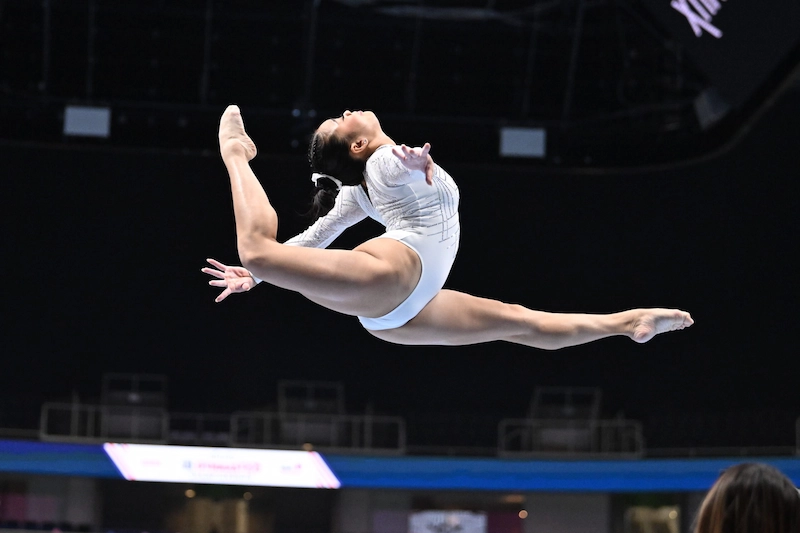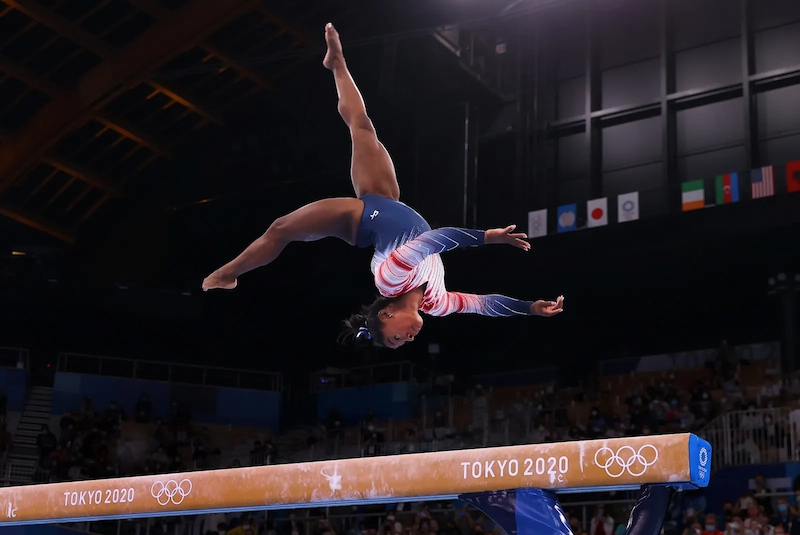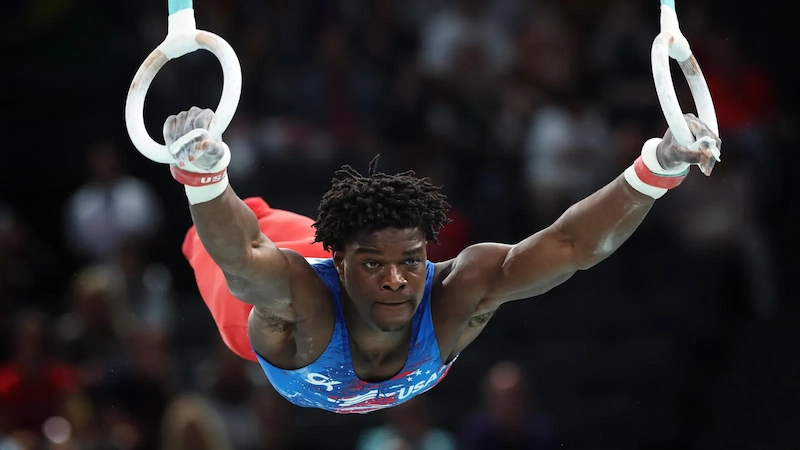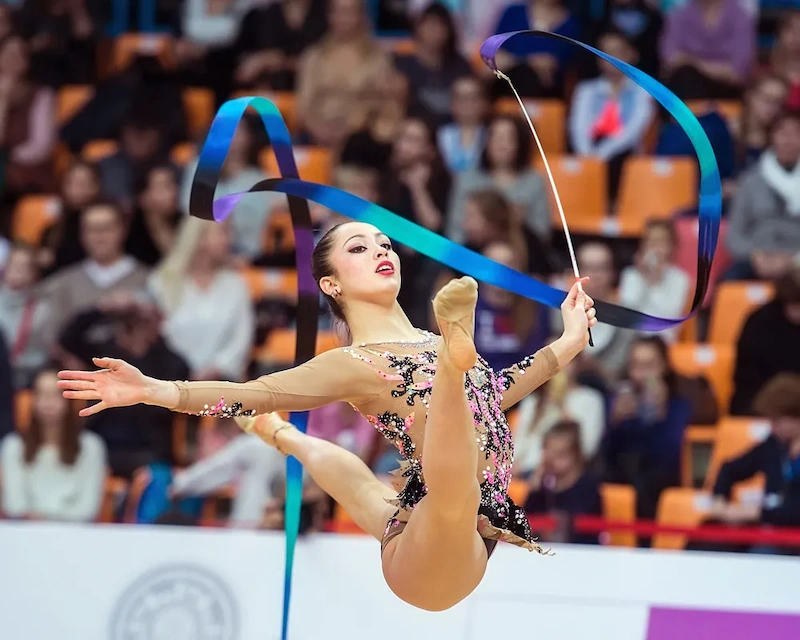Artistic gymnastics is a part of athletics and has developed to a high level worldwide. However, in the Philippines, artistic gymnastics still faces many limitations. In today’s PHLAGO article, we give readers an overview of artistic gymnastics.
What is Artistic Gymnastics? Origin of this Sport

This is a very popular content of athletics at the Olympic Games. In this sport, artistic gymnasts must perform a series of combined movements within a period of 30 to 90 seconds.
The artistic gymnastics athletes’ performances will also be accompanied by movements using types of equipment specific to this sport, such as vaulting frames, swing horses, hanging rings, horizontal bars, parallel bars, and balance beams.
The official governing body of this sport is the Fédération Internationale de Gymnastique – FIG, which has introduced a scoring system and is often responsible for running high-level international artistic gymnastics competitions.
Depending on the country, artistic gymnastics is managed by the affiliated federations of that country. This is considered one of the most-watched sports at the Olympic and SEA Games seasons because of the tension of the performances.
Historical Origin of the Sport

In the time of ancient authors such as Homer, Aristotle, or Plato, artistic gymnastics was mentioned, including more sports than now: swimming, wrestling, boxing …
In modern times, Friedrich Ludwig Jahn is known who developing artistic gymnastics, to distinguish it from military sports exercises, and the use of horizontal bars and horizontal bars as we see today.
In 1881, the FIG was founded, and at this time, there were only 3 member countries. By 1921, more non-European countries joined.
The Olympic Games in 1928 marked the first time that female athletes participated in the competition. And from then on, two branches of artistic gymnastics began to form, for men – MAG and for women – WAG. For this sport, the competition contents for men and women are very different.
Competitions of Artistic Gymnastics

Horse Jumping
Horse jumping, also known as pole jumping, is an event that both male and female athletes can perform at the Olympics.
When competing in this event, athletes will run on a track about 25 meters long and jump onto a springboard, which will create a certain bounce for the athlete, then they will put their hands on a high object called a “horse”, turn around, and then land on the other side of the horse.
As for advanced competitions, athletes may have to perform turns and somersaults before landing.
To perform a successful jump, it requires the competitor to practice a lot, perform the test at a reasonable speed, at the right height to touch the horse. The strength of the athlete’s legs, arms, and shoulders is also important.
Floor Test
The floor is 12 x 12 meters in size and is made of hard foam beads woven together on a layer of wood, with springs underneath to create elasticity. This structure of the floor is designed to support athletes to jump higher and land more gently.
The movements performed in the performance will require athletes to be flexible, agile, and have strong, durable muscles – things that must be practiced regularly to achieve.
In their performance, athletes perform a series of jumping, tumbling, spinning, and handstand movements… and for female athletes, instrumental music lasts for 90 seconds. For men, there will be no music for 60 to 70 seconds.
Pull-up bar
The pull-up bar used in the pull-up bar competition is a steel bar with a radius of about 2.4cm and is placed at a height of about 2.5 meters above the ground. The athlete will perform movements such as turning around the bar, dropping, and twisting to change direction.
Based on the torque created from the turns around the bar, the athlete will perform somersaults to create a highlight for the end of their competition.
Parallel bars
Parallel bars are made up of two parallel bars, wider than the shoulders, and must be about 11.75 meters above the athlete’s ground.
In the competition, the athletes will have to perform movements such as swinging, balancing, dropping… these movements require the competitor to have great strength in the shoulders, hands, and arms… to be able to combine the movements accurately and beautifully.
Hanging rings
This is not a sport for those who are not strong enough or have a fear of heights. The two hanging rings for the male athletes’ test will be suspended from cables 5.8 meters above the ground – this is the ideal height for athletes to perform well in the somersaults in the air.
The movements in the test should best demonstrate the strength of the athlete’s arms, shoulders, and balance. The less swinging and more stable the test on the hanging rings is, the higher the rating.
Crank Horse
The crank horse is a wooden block fixed at a certain height and has two sturdy handles on top. The person performing this test needs to have good balance when performing tests that require one leg and tests that require two legs.
In the competition, athletes swing their legs to perform circular movements around the parts of the swing horse, demonstrating the strength of their arms, shoulder muscles, and abdominal muscles.
Balance bridge
In the uneven bars competition, athletes will perform the test with two bars installed with different heights and widths, forming a pair of uneven bars.
Competitors will have to perform swinging movements, somersaulting on the bar, dropping to change the bar, and perform handstands and somersaults on the bars. The low bar will be started first and then moved to the higher bar.
Competition Format of Artistic Sports

Qualification Round – TQ
Apply the competition format 5 – 4 – 3: that is, in a team of 5 members, 4 members will compete, and only the points of 3 members will be counted. This round does not count for medals, but will be the necessary result to determine the team that goes to the final.
Athletes are also allowed to compete individually to qualify for the all-around finals and the event finals.
Team Finals – TF
Members will compete with their national team, with 4 to 6 competition equipment. The points of this round will determine what type of medal the team wins.
The competition format is 5 – 3 – 3. Each team will have 5 athletes, of which 3 athletes will participate in the test and the points of 3 members.
All-around Final – AA
In this round, athletes are allowed to compete individually and will perform on all 4 or 6 instruments. The scores of athletes in these events will be calculated by total; the three athletes with the highest total score will win medals. In the Olympics, only 2 athletes from a country can participate in the all-around final.
Event Final – EF
In this round, 8 athletes in different equipment events with the highest scores will compete for medals. And each country can only have 2 athletes participating in each event.
